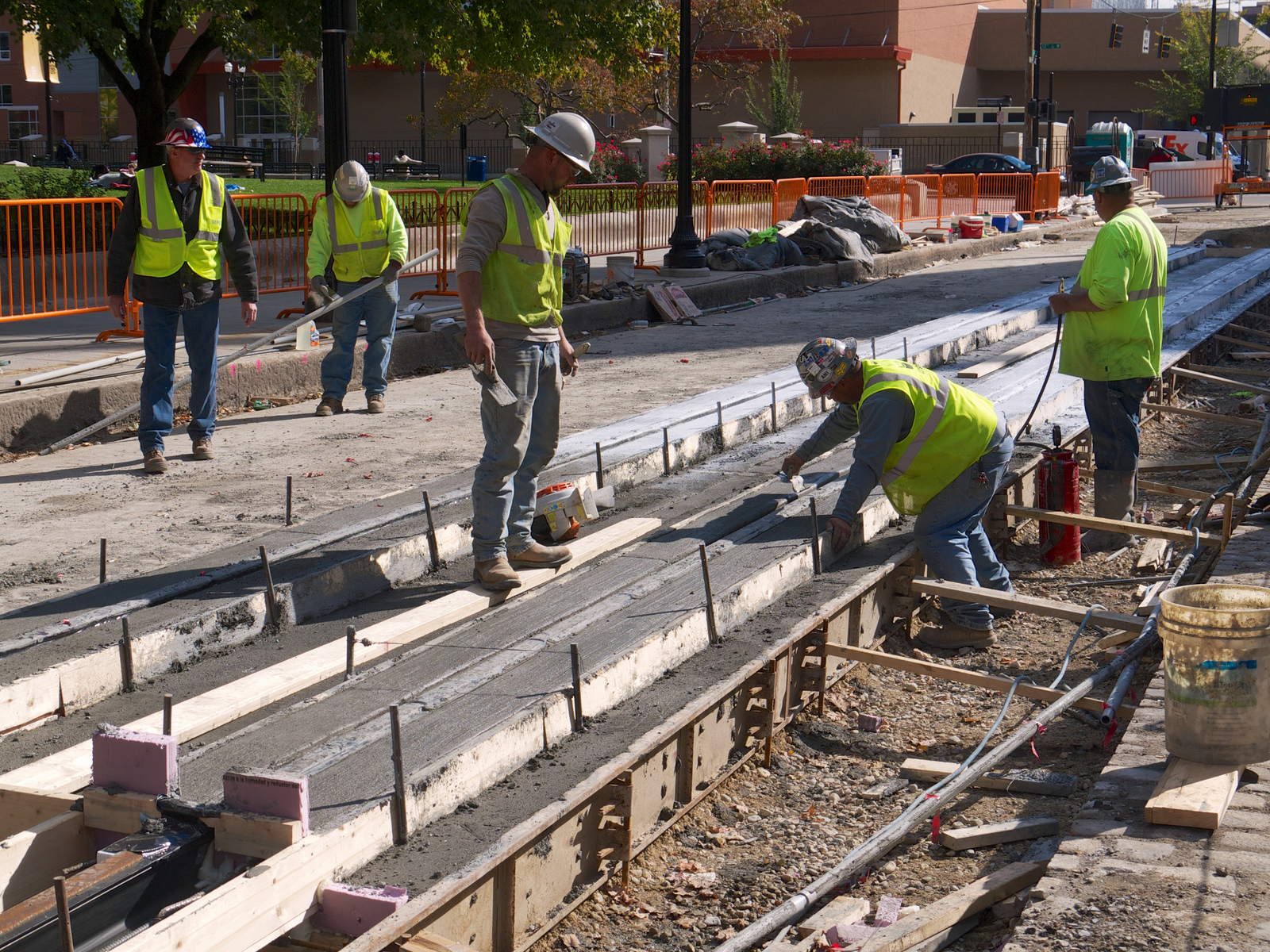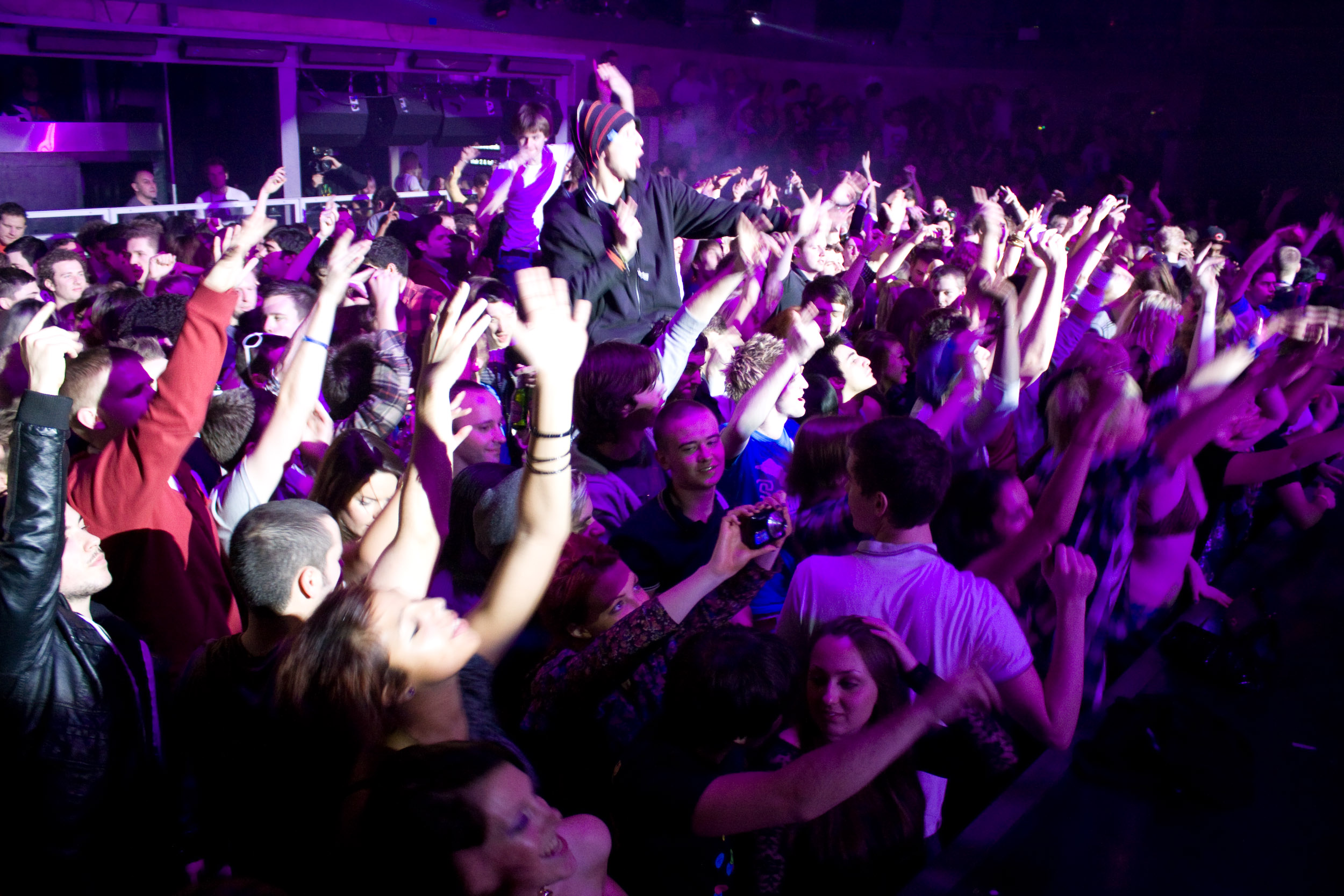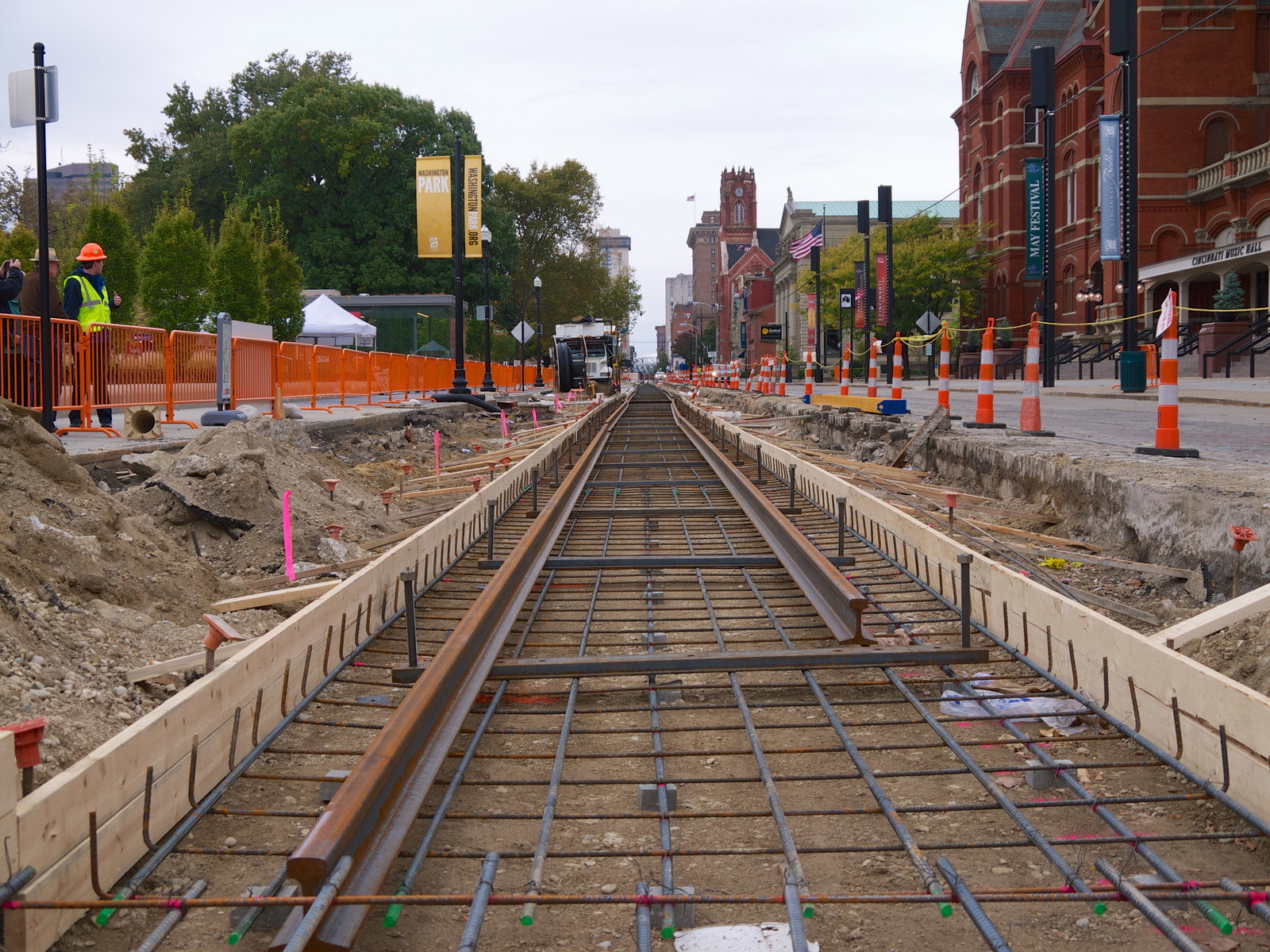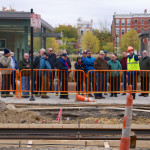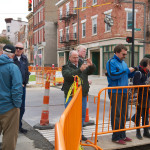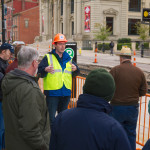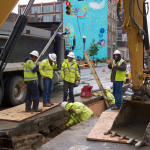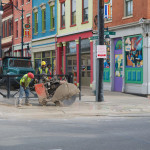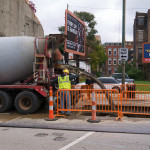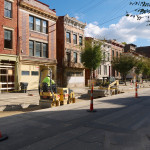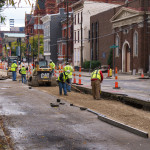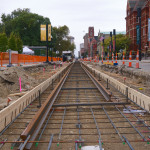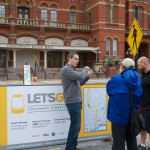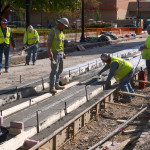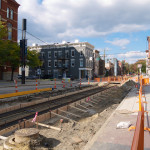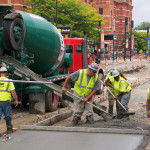
A couple of years ago, an engineer designing our streetcar mentioned Cincinnati wouldn’t be installing the type of streetcar rail used in Seattle and Portland because that Austrian-made product doesn’t comply with “Buy America” requirements. He said not to worry, that the type of rail Cincinnati would be using would open up more possibilities for the future. I never thought much more about it …
… until a couple of weeks ago when I studied the end-profile of the rail they’re installing on Elm Street right now. I could see it wasn’t the streetcar rail I’m used to seeing in the Pacific Northwest. It was common “T” rail used on all kinds of rail systems across the country. So I called my engineer friend and others associated with the project, and sure enough, Cincinnati is building tracks through Over-the-Rhine today that can someday host light rail trains.
There is a similar story in Tacoma, which wants light rail to Seattle someday. Tacoma built its “streetcar tracks” to light rail specs and is now running streetcars similar to ours until the time is ripe for light rail. You can look it up: Google “Tacoma Link Light Rail”. You’ll see pictures of streetcars, not full-on light rail trains.
What Cincinnati is building on Elm Street today could easily become the light rail spine through the heart of the region, slicing diagonally across the downtown basin with seven Fortune 500 corporations, two-thirds of our region’s cultural institutions and thousands of potential new homes within a few blocks of the line.
Prowling around the web site of our streetcar-manufacturer, CAF, I found this. This is the Cincinnati Streetcar, which CAF calls a light rail vehicle (LRV). Cincinnati is buying five of these three-section Urbos vehicles shown here, but CAF makes five- and seven-section Urbos too. Even nine-section ones if you need to move enough passengers to fill a 747.
I asked around some more, and it turns out the engineers have also designed the radii of the curved track to accommodate longer trains. In order to run light rail on our streetcar line someday, we’d have to boost electrical power, change the signal wiring, and lengthen the platforms where the trains would stop. But those are small potatoes in the big picture.
You’ve heard it before, many times: “The streetcar doesn’t go anywhere,” or “I’m not crazy about the streetcar, what I really want is light rail.”
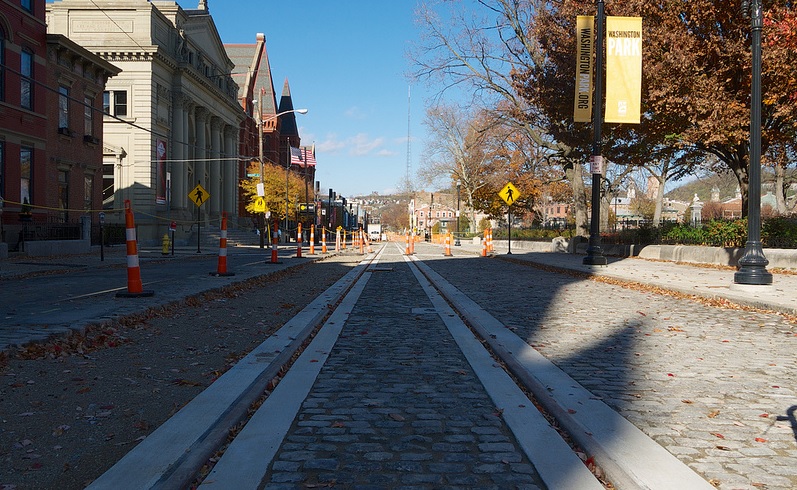
After new light rail tracks were installed in front of Music Hall, refurbished cobblestones were restored along Elm Street. Photograph by Travis Estell for UrbanCincy.
It doesn’t have to be this way forever. Using the Cincinnati Streetcar tracks now under construction, we could have light rail in the I-75 Corridor sooner rather than later. Cincinnatians who believe that rail is “just about downtown” need to look at this from 30,000 feet.
Here’s why. Our streetcars will travel north along Elm until they pass Findlay Market where they will turn east to head up the hill to UC. Longer, faster light rail trains can follow the same path on Elm, but turn west north of Findlay, head over to Central Parkway and then to I-75 where a rail corridor extending throughout Hamilton County is being preserved as part of the highway work now underway. That was a requirement of the I-75 Corridor Study, which found that a newly widened I-75 would attract many more cars and trucks by induced demand and that only the construction of light rail in the corridor would keep future freeway congestion in check.
The I-75 light rail might not always run alongside the highway; it probably can’t in some places. And anyway, the rail line probably wants to leave the highway here and there in order to penetrate neighborhoods and business districts where people live and work.
So our new mayor and city council can choose to cancel the Cincinnati Streetcar at great financial and reputational costs to our city. Or they can move forward and complete the project, allow Cincinnatians to become accustomed to using rail transit, and — when we’re ready to resume the community conversation on regional light rail — have the keystone building block in place. This is an important frame for the decision our city is about to make.
It’s a big decision, a defining moment for Greater Cincinnati. If we turn away from the expanded transportation choices in front of us now, we probably won’t have this chance again for a long time.
John Schneider is a local businessman who has long been an advocate for rail transit. In 2002 he helped lead the MetroMoves campaign and was instrumental in both Issue 9 and Issue 48 victories. He has personally led hundreds of Cincinnatians on tour of Portland’s streetcar and light rail system, and the development it has caused. Schneider is also the chairman of the Alliance for Regional Transit and sits on Cincinnati’s Planning Commission. If you would like to submit a guest editorial to UrbanCincy you can do so by contacting our editorial team at editors@urbancincy.com.

